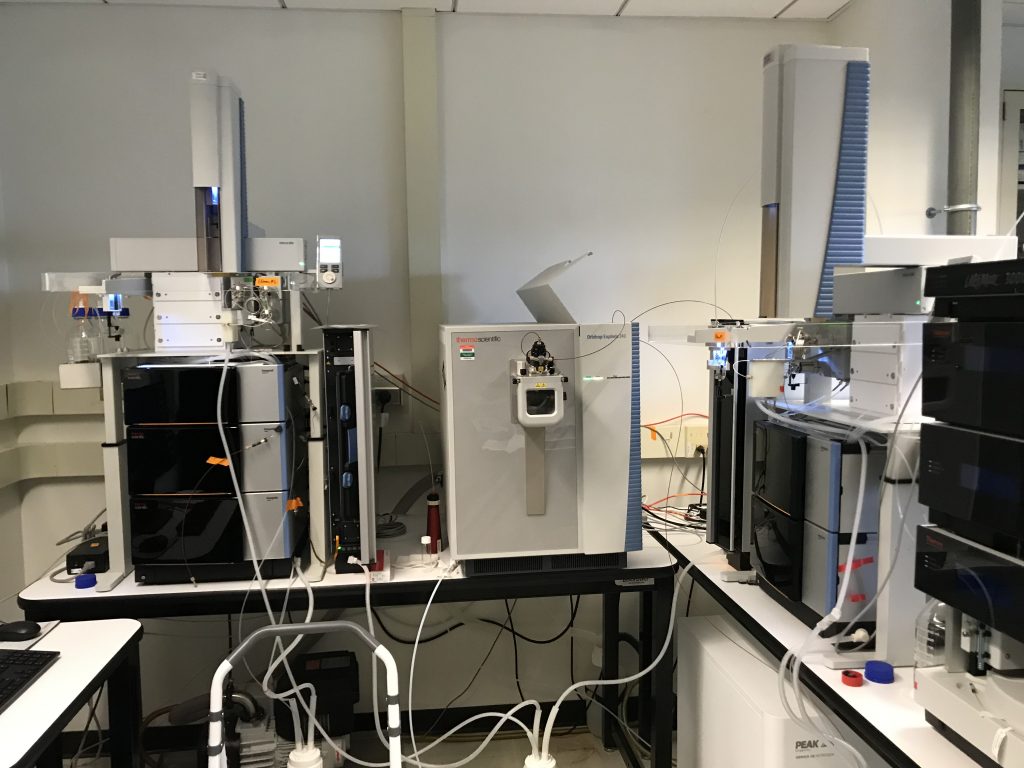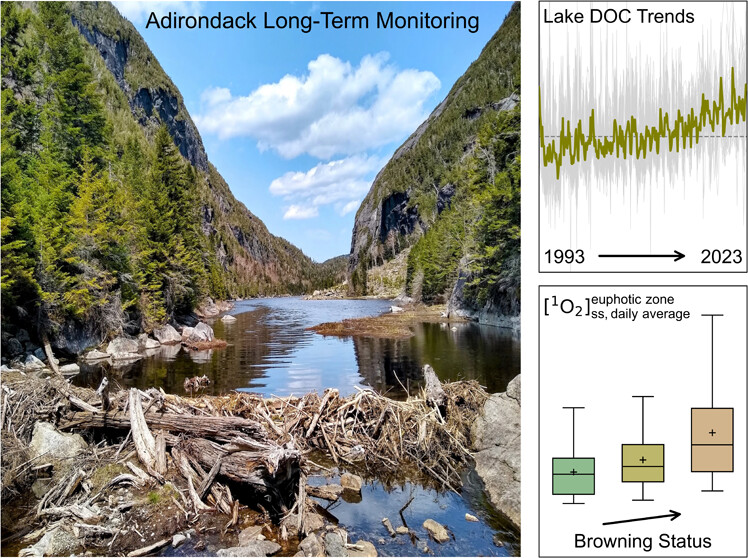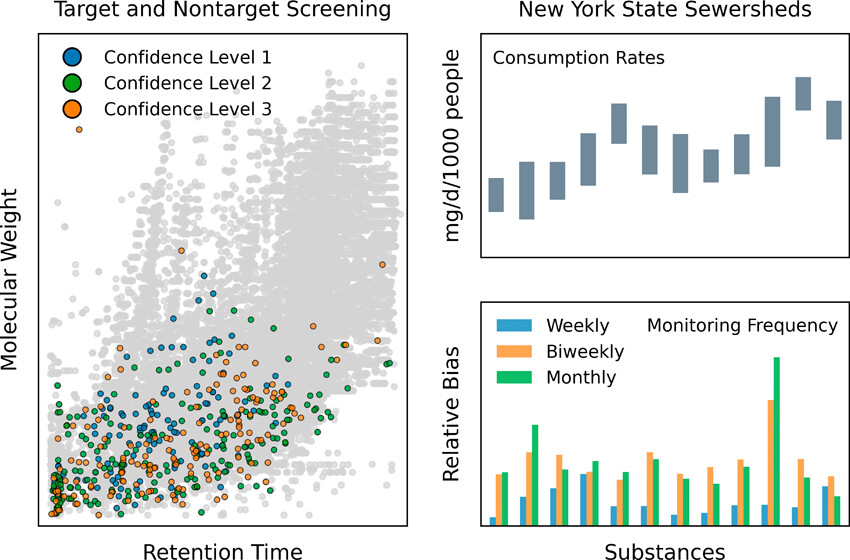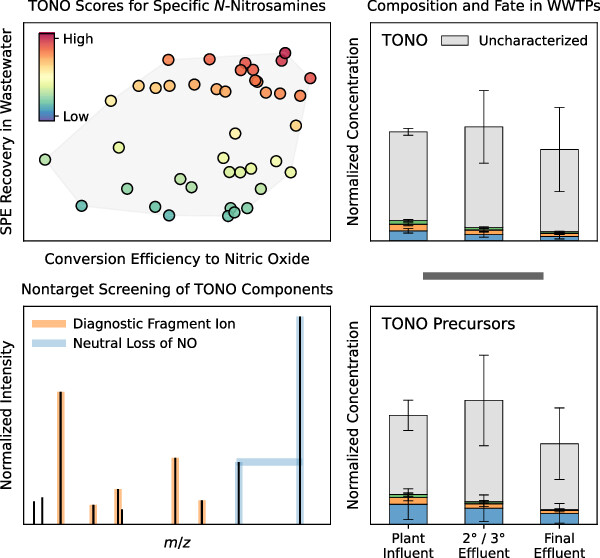Our research group combines collaborative field sampling, organic trace analysis, and data analytics tools to study chemical processes in environmental systems. Our work primarily focuses on the occurrence and fate of organic micropollutants in surface waters and groundwater, the impacts of algal blooms and lake browning on organic matter photochemistry, and the formation and control of byproducts during water treatment and reuse. Our group has also developed analytical workflows to support substance use assessment through wastewater surveillance in New York. See the list of publications on Google Scholar.
Organic Micropollutants in Surface Waters and Groundwater
Organic micropollutants (OMPs) are contaminants of global concern and represent an anthropogenic stressor on aquatic ecosystems. Our group applies suspect and nontarget screening methods based on liquid chromatography-high-resolution mass spectrometry (LC-HRMS) to characterize the occurrence and fate of OMPs in lakes, streams, and groundwater through collaborations with colleagues from multiple disciplines and organizations. Our most recent efforts aim to explore the co-occurrence of OMPs and microplastics in the embayments and nearshore waters of Lake Ontario in collaboration with the Upstate Freshwater Institute.

Our group operates two HRMS instruments: an Orbitrap Exploris 240 mass spectrometer (hyphenated with two EQuan Max Plus systems; pictured to the left; supported by NSF Grant No. 2018497) and an LTQ-Orbitrap XL mass spectrometer. Other instruments for sample analysis include Aqualog, vario TOC/TN analyzer, Infinity HPLC with VWD/FLD, Integrion HPIC, and Microtox analyzer, among others.
Organic Matter Photochemistry in a Changing Climate
Organic matter plays critical roles in a wide range of biogeochemical processes in both terrestrial and aquatic environments. Our group is particularly interested in studying the photochemistry of dissolved organic matter in inland lakes under changing climate conditions because some of these lakes are experiencing an increasing frequency of cyanobacterial blooms, while others are undergoing long-term browning due to rising levels of dissolved organic carbon.

Our group has demonstrated the impact of cyanobacterial blooms on changes in the photoreactivity of lake water samples collected by citizen volunteers across New York in collaboration with colleagues from the Upstate Freshwater Institute. Currently, we are exploring how browning may affect the surface water photoreactivity of Adirondack lakes that are recovering from historical atmospheric acid deposition.
Wastewater Surveillance for Substance Use Assessment

Wastewater-based epidemiology (WBE) involves the systematic analysis of untreated sewage to extract chemical signatures and/or biological markers. Over the past decade, WBE has been implemented worldwide as a complementary tool to conventional surveillance techniques to inform public health responses.
Many wastewater surveillance initiatives in the U.S. are interested in leveraging the existing infrastructure to assess the impact of the opioid epidemic and other substance use disorders given the rising number of fatal overdoses and nonfatal intoxications resulting from drug abuse. Our group is part of the New York State wastewater surveillance team led by collaborators from Public Health. Our recent work applied high-throughput quantification and nontargeted analysis to evaluate the operational feasibility of incorporating substance use assessment into the statewide wastewater surveillance network in New York.
Formation and Control of Byproducts in Water Treatment and Reuse Systems
Our work on this front has mainly revolved around N-nitrosamines, which are compounds of significant public health concern because many of them exhibit mutagenic and carcinogenic potential. N-Nitrosamines may form as byproducts during oxidative water treatment (e.g., chlor(am)ination or ozonation) or occur as impurities in consumer and industrial products.

Our group configured an integrated experimental setup to enable the comparative analysis of two chemiluminescence-based methods for total N-nitrosamine measurements in environmental water samples and applied chemiluminescence detection in conjunction with LC-HRMS to examine the composition and fate of total N-nitrosamines in wastewater treatment systems.
